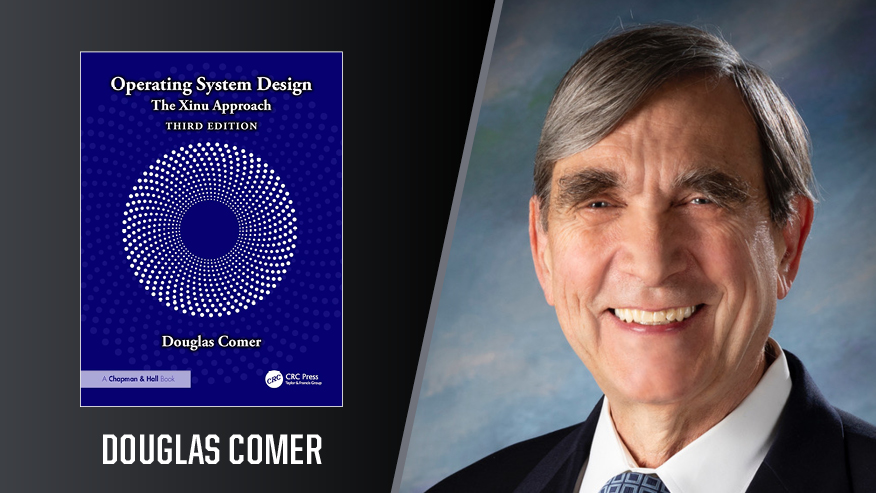
Douglas Comer, Distinguished Professor of Computer Science and a professor of electrical and computer engineering (courtesy), and his published book “Operating System Design: The Xinu Approach.”
Publication title
Operating System Design: The Xinu Approach
Purdue author
Publisher
Chapman & Hall
Publication date
May 22, 2025
About the book (from the publisher)
Lauded for avoiding the typical vague, high-level survey approach found in many texts, earlier editions of this bestselling book removed the mystery by explaining the internal structure of an operating system in clear, readable prose. The third edition of “Operating System Design: The Xinu Approach” expands and extends the text to include new chapters on a pipe mechanism, multicore operating systems and considerations of operating systems being used in unexpected ways.
The text covers all major operating system components, including the key topics of scheduling and context switching, physical and virtual memory management, file systems, device drivers, device-independent I/O, Internet communication, and user interfaces. More importantly, the book follows a logical architecture that places each component in a multilevel hierarchy. It simplifies learning about operating systems by allowing a reader to understand one level at a time without needing forward references. It starts with a bare machine and builds the system level by level. In the end, a reader will appreciate how all the components of an operating system work together to form a unified, integrated platform that allows arbitrary application programs to run concurrently.
The text uses a small, elegant system named Xinu as an example to illustrate the concepts and principles and make the discussion concrete. Because an operating system must deal with the underlying hardware, the text shows examples for the two basic computer architectural approaches used in the computer industry: CISC and RISC. Readers will see that most of the code remains identical across the two architectures, and they can easily compare the differences among the machine-dependent pieces, such as hardware initialization code, device interface code and context switch code.
About the Purdue author
Douglas Comer is a Distinguished Professor of Computer Science and a professor of electrical and computer engineering (courtesy). He is known for writing the first series of textbooks explaining the scientific principles underlying the design of the internet and its communications protocols. Comer is a member of the Internet Hall of Fame and pioneered tunneling, a technique that allows internet packets to be transferred across a public network.
About the In Print series
To celebrate our faculty’s excellence in scholarship, Purdue Today’s weekly book series highlights faculty expertise across diverse subjects and disciplines. Find out more about the Purdue University Books Initiative and how to suggest a book for the In Print series on the Office of the Provost website.